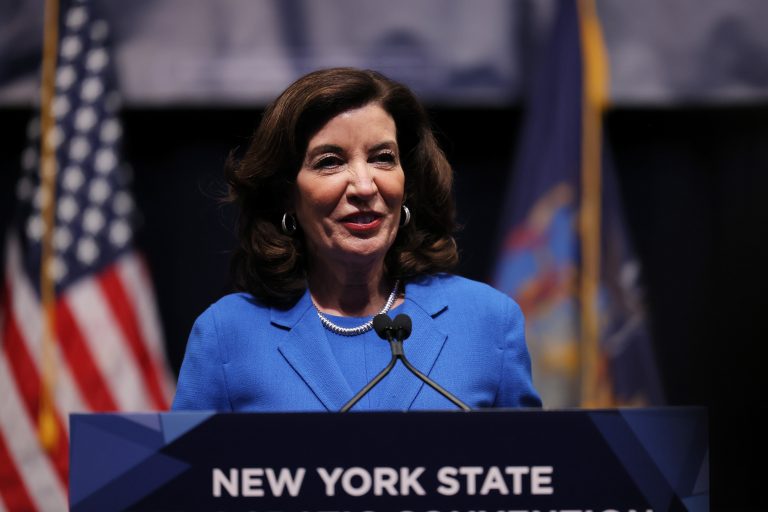New York’s public employee unions have much to celebrate after Gov. Kathy Hochul unveiled a record-breaking $220 billion budget last week that partially rolled back decade-old pension reforms.
Peter Warren, research director with the Empire Center for Public Policy told the New York Post, “It looks like ‘big labor’ got things they were seeking and rolling back pension reform is one of them.”
Pension laws, approved and implemented in 2010 and 2012 required all new state and local government workers hired under new Tiers 5 and 6 to work at least 10 years in order to be vested in the state’s pension system.
Under the new budget state workers now only have to work for five years in order to be eligible to start participating in the state’s pension program. The reforms cover most occupations excluding police and firefighters.
The reforms also waive overtime costs for the next two years for Tier 6 workers who were previously placed in a higher contribution bracket forcing them to pay more towards their retirement account.
Success
You are now signed up for our newsletter
Success
Check your email to complete sign up
According to legislative sources the reforms are expected to cost taxpayers at least $11 million this fiscal year alone.
Warren was not impressed saying, “This is a step back for the state. The changes to Tier 5 and 6 were huge victories for taxpayers.”
The changes to the pension program in 2012, enacted by former Gov. Andrew Cuomo, implemented a progressive payment system for employee contributions. State employees with higher compensation paid a higher percentage toward their pension.
A source, who worked with Cuomo told the New York Post, “That was done to address overtime abuse – workers gaming the system to boost their overtime and pension before they retire.”
The changes were implemented at the time to address rampant overtime abuse and in some cases fraud.
Under Cuomo’s plan, state employees who earned between $45,000 and $55,000 were required to contribute 3.5 percent of their pay towards their pension. Employees earning between $55,000 and $75,000 were required to contribute 4.5 percent and employees earning compensation between $75,000 and $100,000 were required to contribute 5.7 percent. Those earning over $100,000 contributed 6 percent.
E.J. McMahon, an adjunct fellow for the Manhattan Institute wrote in a recently published Post column, “The reforms have saved billions of taxpayer dollars for the state and local governments over the past decade – including $1 billion this year alone – plus significant added savings for New York City’s separate pension systems.”
Warren asserts that under the Cuomo reforms — which were highly contested by public employee unions — the state’s pension plan was more generous than what workers would get in the private sector.
“Why go back?” Warren said, attacking the new reforms adding that, “There’s no recruitment crisis.”
Despite opposition, lawmakers want to continue amending the pension system.
Assemblyman Peter Abbate, chairman of the committee on government employees, who oversees pension legislation said, “It’s a good start. The unions were active pushing for changes and so was I.”
Abbate wants to see more reduced pension contributions for all state government workers, decreasing required contributions from 6 percent at the high end down to 3 percent.
According to the New York Post, Abbate said, “Everyone should pay 3%. To me, that would be fair.”















